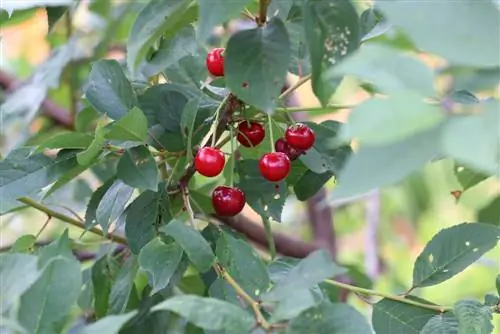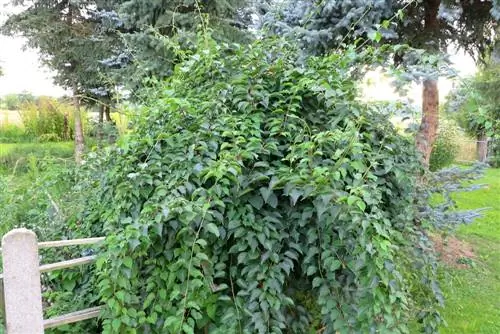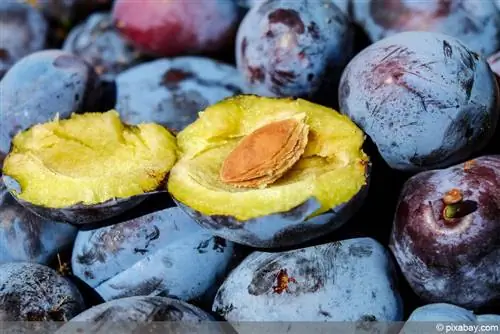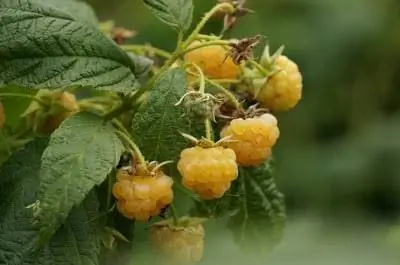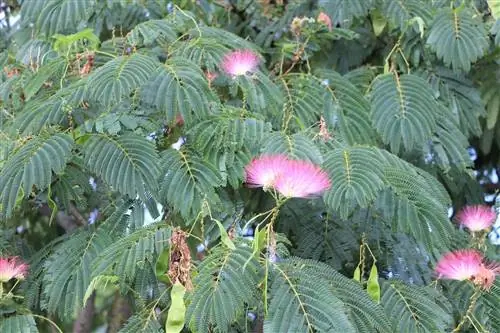- Author admin [email protected].
- Public 2023-12-17 03:39.
- Last modified 2025-01-24 12:45.
Bush trees are well suited to manageable garden areas because they have a low growth height. The small fruit trees are content with little space and are not particularly maintenance-intensive. Nevertheless, the delicate fruit trees deliver rich harvests even after a relatively short time after planting. The crown can be trained into the desired shape and direction of growth through targeted pruning.
Care
Bush trees come from fruit tree grafting that allows for a significant reduction in height and width. This is why bush trees are often referred to as low-trunk or quarter-trunk. In addition, these refined fruit trees are usually cultivated as spindle trees, which do not take up much space. Due to their low height, bush trees are easy to harvest, although the yields are still very high. With correct care and optimal location and growth conditions, the first fruits can be harvested after just a few years. With this representative of fruit trees, it is necessary to offer them support in the first years of life.
- Low to medium growing fruit trees
- Grow relatively slowly
- Course varieties are: apples, pears, cherries, mirabelle plums, plums, quinces and plums
- Expected final height is around 3-4 m
- Trunk length is approx. 40-60 cm
- First returns can be expected after just 1-3 years of operation
- Can live 30-40 years
- Support with a trellis or by tying it to a wire system
Location & plant substrate
In general, fruit trees prefer light-flooded locations that offer them enough space to spread out. When choosing a location, the mature condition of the bush trees should definitely be taken into account. Despite their smaller growth habit, the fruit trees still require a certain amount of space. Mature trees of 3 to 4 meters cast a corresponding shadow. If this is not desired in the used garden and outdoor areas, then a certain distance must be maintained. A balanced soil is very important for he althy growth, so the soil in the planting hole should be well prepared. Before planting, it is a good idea to enrich the soil for the young bush trees so that they have sufficient nutrients available in their first year of growth.
- A sunny, wind-protected and free location is ideal
- Nothing should restrict growth
- Do not place several copies too close together
- Don’t plant too close to walls, residential buildings and terraces
- Prefer moderately moist plant substrate
- Dig up 0.5 to 1 m³ of soil before planting
- Mix 1/3 topsoil with 1/3 mature compost and 1/3 loam or clay
- Mix the ingredients together well
- Pour enriched plant substrate back into the planting hole
- Also spread this around the tree
Watering and fertilizing
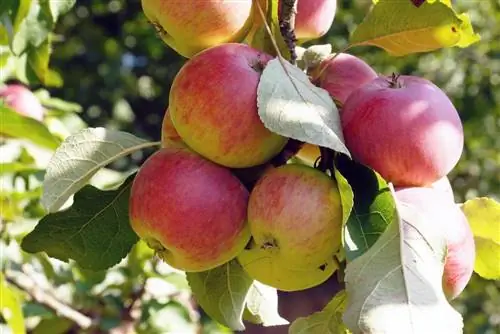
Since most bush trees are native fruit varieties, they usually cope well with the prevailing conditions. However, young specimens still need additional watering and fertilizer in the first few years after planting. However, when fertilizing, the right time is crucial, neither directly after planting nor in the fall. If the bush trees were planted in spring, fertilization is only necessary the following year.
- Young bush trees depend on regular watering
- Water sufficiently during prolonged dry periods
- Water additionally in the first 3-4 years of life
- Older specimens mostly manage without additional watering
- Fertilize only in spring, during budding
- The months March-April are ideal
- Pay attention to suitable fertilizers for fruit plants
- Do not use fertilizer with blue grain
Plants & Plant Spacing
Bush trees only form a small root ball, which is why they rely on mechanical support in the initial years. Due to the artificial growth reduction, a discrepancy between the size of the crown and the root ball can quickly arise. If the anchoring in the ground is not strong enough, the bush tree can fall due to strong winds. Therefore, an additional support is advisable for long-term stabilization, which ensures good stability. In addition, the fruit trees need sufficient space, not only in relation to neighboring buildings and walls, but also in relation to other trees and plants. Fertilizer should not be applied when planting, but only in the second year. Over the years, the roots must not come into contact with the soil that is too dense, otherwise growth may be inhibited.
- Planting distance should be at least 3-4 m
- An area of 12 m² is ideal for planting
- Plan for shadows and proximity to buildings
- Support a young tree with a stake or something similar
- Make sure the excavation is sufficiently large
- Put the root ball in a water bath for a few hours beforehand
- If bale is wrapped with fabric when purchased, then remove material
- Ideally plant as a pair
Tip:
It is advisable to remember the direction in which the bush tree was standing when shopping. If this is then planted again in exactly the same orientation, the fruit tree will get used to the new location faster and better.
Cutting
Due to the often limited space available, bush trees must not grow too high or too densely, which is why the main shoot should be cut off early on. To prevent a new main shoot from forming, the fruit tree must be pruned periodically. That's why all shoots that grow in the middle of the tree's crown should be cut off in the first winter. This process must be repeated in the winter of the second year, then the basic structure is ready. The height of the bush tree can be adjusted to the respective site conditions by pruning it every year. The desired crown shape should correspond to the needs of the respective type of fruit.
- Cut the young tree after planting to a height of approx. 75 cm
- Leave only three very strongly developed side shoots
- Short side shoots by a third
- In the first winter, shorten the shoots by half for the basic structure
- Cut back all other shoots to 3-4 eyes
- By cutting off the main shoot, more side shoots will form
- Regular training cuts are required
Wintering
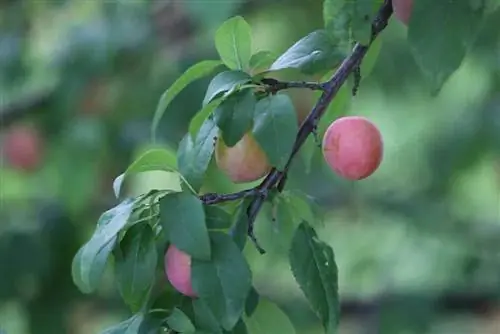
Native varieties are usually hardy and cope well with the local forest values. However, young specimens are somewhat sensitive to temperatures below zero, just like non-native fruit varieties. Young fruit trees with thin and smooth bark also often develop frost cracks. That's why these bush trees enjoy additional protection during the winter months.
- Pay attention to winter protection, especially at higher and exposed locations
- Cover the area around the tree trunk, directly above the root area
- Either apply a layer of mulch or leaves
- For very sensitive specimens, cover the treetop with fleece
- Protect the trunk from frost-related stress cracks with white paint
Diseases & Pests
Since the bush trees are grafted fruit trees, they are affected by the same diseases and pests as the normally growing specimens. Aphids in particular can be very annoying in the early days, as newly transplanted trees are still very vulnerable and weak. An infestation should therefore be treated immediately so as not to put unnecessary strain on the bush tree.
- Check regularly for aphid infestations
- Collect lice or crush them to protect the leaves
- Wash leaves with gentle soapy water
- Spray the treetop repeatedly with diluted nettle decoction

